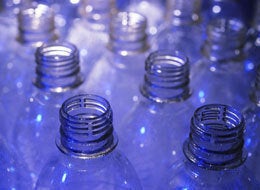
Dirty drinking water has always been a problem -- a big one. In the mid-1800s, water-related diseases killed hundreds of thousands of Americans -- including our eleventh president, James K. Polk.
These days we take safe drinking water for granted. But unsafe water continues to kill -- and the numbers who die have grown to intolerable heights.
- Each year more than 3 million people are killed by water-related diseases,
- Every 20 seconds, a child dies of a water-related disease.
- Diarrheal disease is now the second largest killer of children under five.
This is shocking, yet water still doesn't have its proper place on the international agenda and few countries have had the courage to lead on this issue.
Why? Partly because water-related diseases largely affect the voiceless. Ninety-eight percent of water-related deaths occur in the developing world and, unlike with tuberculosis or pandemic flu, we here never have to worry about "catching" a water-related disease. Either you live in a place with safe water, or you don't.
More fundamentally, we tend to view the problem as too hard to deal with. Too often, "solving" the water problem means infrastructure - pipelines, water reservoirs and sewage systems - projects that take decades to design, finance and build and seem frankly inconceivable in some parts of the world.
In contrast, other global health emergencies somehow seem more manageable. Take malaria, for example. The tools to conquer malaria are relatively easy to grasp: mosquito nets, medicine, and spraying. Simple solutions to an enormous problem.
We need to reframe how we view the water problem and its solutions. Sure, the long-term solution is to ensure that every household and every family has a pipe with safe water flowing into their house. But while we work toward that long-term goal, we can save lives NOW. Safe water can be provided to people in the poorest regions of the world, easily, immediately and at low cost through household solutions.
A West African proverb says, "Filthy water cannot be washed." In fact, it can. For as little as a penny a day for a family of four.
Affordable water treatment solutions include:
- chlorine tablets and solution;
- ceramic filters;
- solar disinfection;
- and purifying water with household water disinfectants like PUR packets.
These solutions allow mothers to take the health and well-being of their children into their own hands. In the United States, we've been using those solutions to clean our water for over 100 years, but only now are poor communities in developing countries able to access those same technologies. The challenge now is to let people know that such solutions exist and to make them available for distribution and use.
At the same time, we must encourage healthy behaviors that cost nothing to save lives. Proper hygiene and sanitation, like hand-washing, can cut diarrhea episodes by up to 45 percent. Other cost-effective methods for household water treatment, like solar water disinfection, should also be encouraged.
On these few days out of the year, when the water crisis takes center stage, it's worth considering how many lives could be saved with the relatively small short-term investments needed to provide clean water to the poor.
Here are some things you can do:
1. Spread the word - PSI teamed up with other leading health organizations and GOOD to develop a cutting-edge video series to raise awareness of the world water crisis. Check out the videos, then share them with your friends (we remade iconic water scenes from: Cool Hand Luke, Crocodile Mile and Psycho; we also helped produce the Drinking Water video above).
2. Get involved - Join the "Safe & Healthy Water For Everyone" Facebook page and the American Chemistry Council will donate 100 liters of safe water for every new member, up to 10 million liters. Or follow them on Twitter @WorldH2O or @chlorine and they'll make the same 100 liter donation per follower.
3. Take action - Check out www.worldH2Oday.org for ideas on awareness-raising events that you can do in your own community and sign a petition calling on President Obama to make more resources available for water issues.
The economic crisis across the globe threatens the poorest families deeply -- yet solutions for them are simpler than we think. Water is one area where, for a relatively modest investment, we can help those in the greatest need.
Karl Hofmann, a former U.S. Ambassador and State Department official, is president and chief executive officer of PSI, a leading non-profit global health organization.